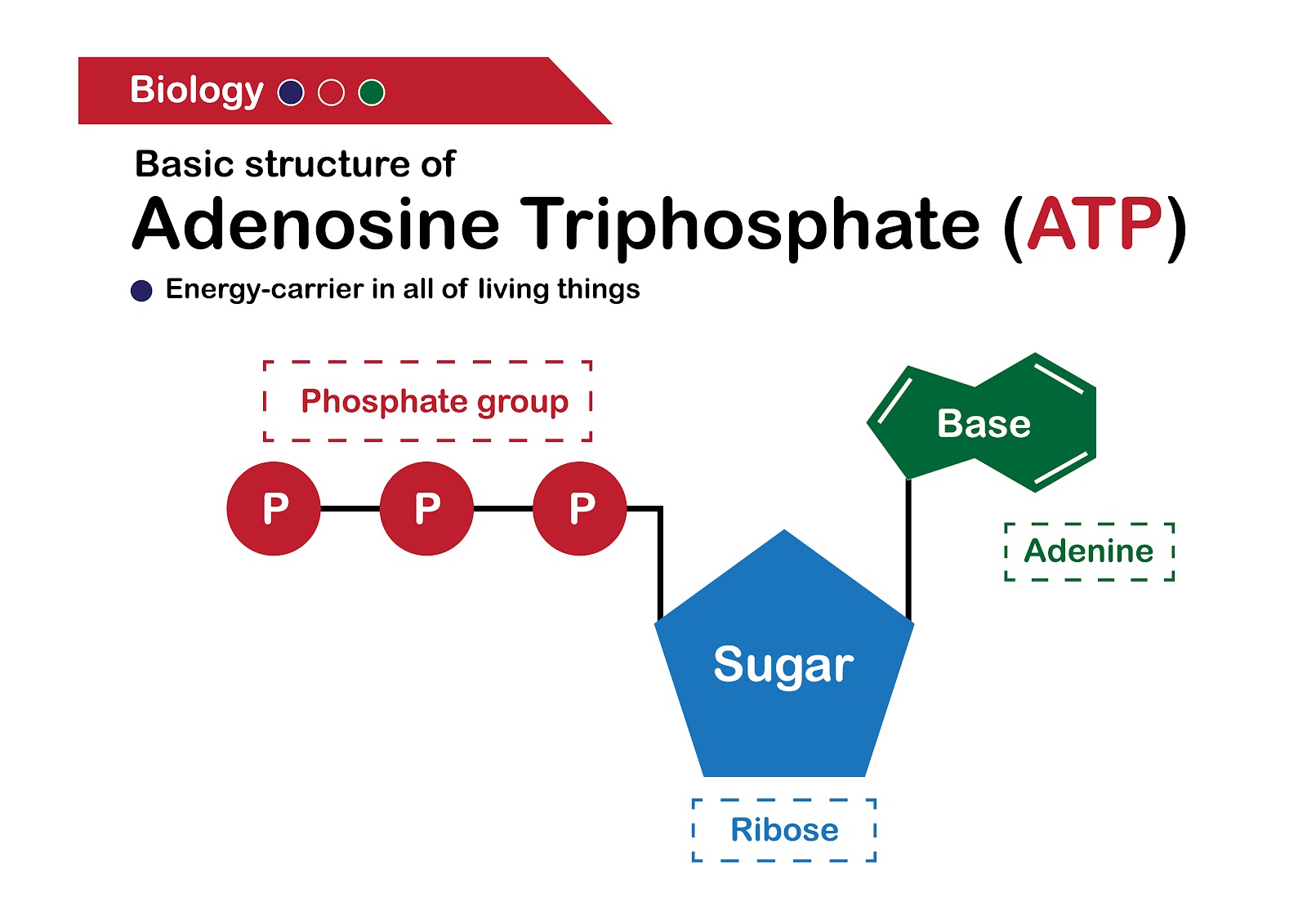What is full form of ATP in biology?
A vital "energy molecule" present in all living things is adenosine 5′-triphosphate, also known as ATP and typically written without the 5′-. In particular, it is a coenzyme that transfers energy to cells by releasing its phosphate groups when it interacts with enzymes like ATP triphosphatase. An adenine bicyclic system, a furanose ring, and a triphosphate chain make up the molecule.
The ATP is structurally composed of the molecule adenosine, which is made up of three phosphate groups and the amino acid adenine. Because the three phosphate groups are connected by two phosphoanhydride bonds, it is soluble in water and contains a lot of energy.
Also Check: Fertilization in BIology

Functions of ATP
The principal energy source for critical biological processes such muscular contraction, nerve impulse transmission, and protein synthesis is ATP (generated in mitochondria).
There are various different ways to make ATP. Particular to plants and cyanobacteria is the process of photophosphorylation. During photosynthesis, it is the conversion of ADP to ATP utilising solar energy. In the mitochondria of a cell, the process of cellular respiration also results in the formation of ATP. This can be done through either anaerobic or aerobic respiration, depending on whether oxygen is present.From glucose and oxygen, aerobic respiration creates ATP, as well as carbon dioxide and water. Archaea and bacteria that thrive in anaerobic conditions largely use the method of anaerobic respiration, which doesn't require oxygen. Another process that can generate ATP without the need for oxygen is fermentation, which differs from anaerobic respiration since it does not involve an electron transport chain. Examples of organisms that employ fermentation to produce ATP include bacteria and yeast.
All cellular processes employ ATP as their primary energy carrier. Energy is released when ATP is digested and changed into adenosine diphosphate (ADP). Under normal circumstances, the removal of one phosphate group yields 7.3 kcal per mole or 30.6 kcal per mole. All internal cell reactions are propelled by this energy. Additionally, ADP can be transformed back into ATP to release the energy for use in other cellular processes.
Also Check: Fungi in Biology
Structure of ATP
ATP (Adenosine Triphosphate) is a nucleotide composed of three main components: the nitrogenous base adenine, the pentose sugar ribose, and a chain of three phosphate groups.
The structure of ATP can be broken down as follows:
- Adenine: A nitrogenous base that is attached to the 1' carbon atom of the ribose sugar.
- Ribose: A pentose sugar to which the adenine base and the phosphate groups are attached.
- Phosphate groups: Three phosphate groups (labeled alpha (α), beta (β), and gamma (γ)) are attached to the 5' carbon atom of the ribose sugar. The bonds between the phosphate groups are called phosphoanhydride bonds.
The phosphate tail of ATP is the actual power source that cells tap into. The available energy is contained in the bonds between the phosphates and is released when they are broken, which occurs through the addition of a water molecule (hydrolysis). Usually, only the outer (γ) phosphate group is removed from ATP to yield energy, converting ATP into ADP (Adenosine Diphosphate).
In neutral solution, ionized ATP exists mostly as ATP4−, with a small proportion of ATP3−. ATP also binds to metal cations, particularly Mg2+, with high affinity.
Frequently Asked Questions
ATP (Adenosine Triphosphate) is the primary energy currency of cells. It is a high-energy molecule that stores and transfers energy to power various cellular processes, such as muscle contraction, protein synthesis, and active transport.
ATP stands for Adenosine Triphosphate. It is a complex organic molecule composed of the nucleoside adenosine and three phosphate groups. ATP is the main energy-carrying molecule in cells and is often referred to as the "energy currency" of the cell.
ATP is primarily formed through the process of cellular respiration, which occurs in the mitochondria of cells. During this process, the energy released from the breakdown of glucose and other nutrients is used to synthesize ATP from ADP (Adenosine Diphosphate) and inorganic phosphate.
ATP is not stored in cells; rather, it is constantly being produced and used as needed. Cells maintain a relatively stable concentration of ATP, which is then utilized for various energy-requiring processes. The energy released from the breakdown of ATP is immediately used to power cellular activities.
The central role of ATP in energy metabolism was discovered by Fritz Albert Lipmann and Herman Kalckar in 1941. They recognized that ATP was the primary energy currency of the cell, serving as the link between the breakdown of nutrients and the energy-requiring processes within the cell. This discovery was a significant milestone in understanding cellular bioenergetics.